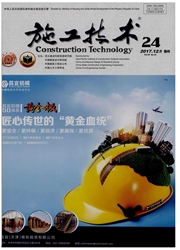

 中文摘要:
中文摘要:
以北京地铁4号线西四站为背景,运用FLAC3D软件对施工过程进行三维动态模拟,对开挖过程中主体结构周边土体与衬砌结构的应力发展与调节过程进行详细研究,从而从根源上分析最终的位移场是经过怎样的应力重分布过程形成。研究结果表明:各导洞开挖时,其两侧土体中会出现较大的压应力,底部土体存在较大拉应力。弧线型格栅比直线型格栅受力状态较好。下层导洞在侧洞向中洞过渡的尖角部位所受拉应力较大。开挖过程中,掌子面前方2m左右范围内土体会发生剪切破坏。另外,随着非对称开挖向对称开挖的转变,应力场能够很快调整到对称分布,而位移场的调整则需要较长的时间。
 英文摘要:
英文摘要:
The short-range shallow buried covered excavation process is simulated with FLAC3D combined with engineering situation of Xisi station of Beijing Subway Line 4 . The stress development and adjustment between soil and liner structure during excavation is further study to reveal the process of final displacement field caused by stress changes. The research shows that when the pilot drift is excavated larger pressure and tensile will appear in the bilateral soil and bottom soil. The stress states of barrier is better than the liner’ s. The tensile of cusp location from bottom pilot drift to center hole is much larger. The shear failure appears in the 2m range before the workface. Furthermore, stress fields will become symmetric distribution quickly while the displacement fields adjustment needs more time when the excavation from asymmetric to symmetric distribution.
 同期刊论文项目
同期刊论文项目
 同项目期刊论文
同项目期刊论文
 期刊信息
期刊信息
